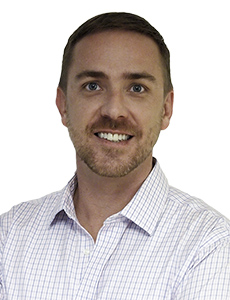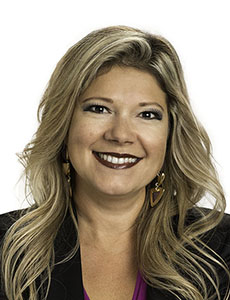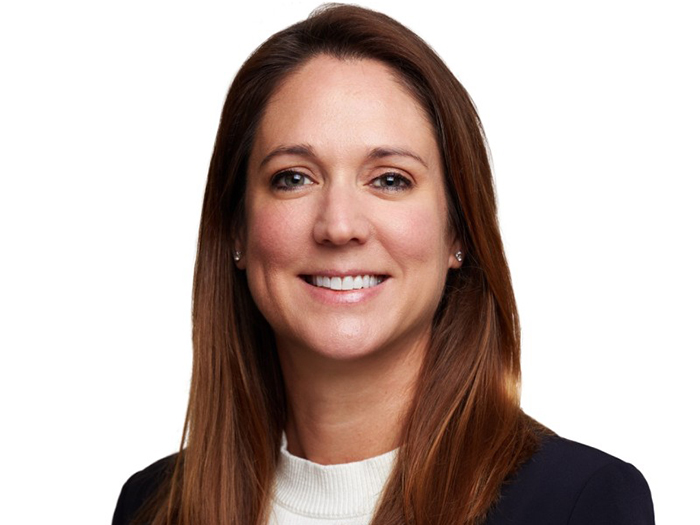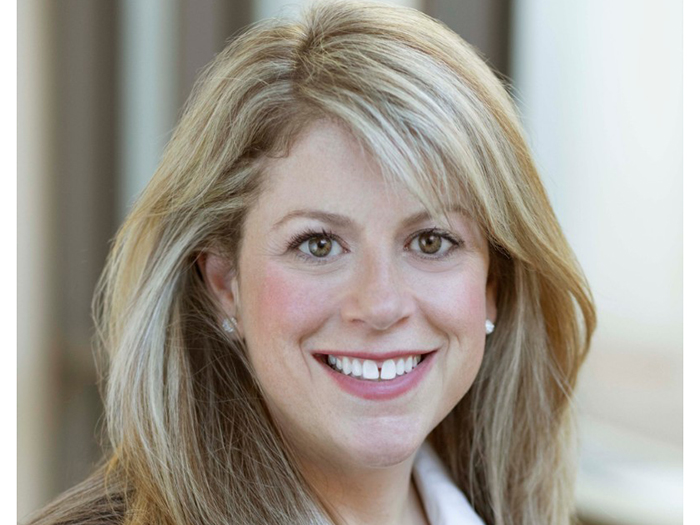Powering People with Technology to Close Gaps Across the Life of a Claim

The U.S. health care system is comprised of many independent silos — primary care physicians, specialists, hospitals, pharmacies, labs and more.
Add to the mix the variable regulations and requirements of workers’ comp insurance and you have a complex environment that makes the efficient flow of communication challenging. Important pieces of information can be lost in the gaps between silos, causing delays, misdirected treatment, unnecessary costs, and compromised care.
Risk & Insurance® sat down with thought leaders across the Healthesystems organization to talk about the failed connections that can create obstacles to timely and effective care for injured workers, the latest solutions to address and prevent information and communication gaps, and the drive for a more thoughtful synergy between people and technology.
What Do We Know? Leveraging the Value of Unstructured Data
The information needed to facilitate a swift and smooth return to work and to health is all there — if we know where to find it and how to use it. But throughout the course of an injured worker’s claim, necessary information is not always accessible in ways that can best inform decision makers. Gaps can frustrate treatment providers and cause delays in recovery, as well as pile on costs.
For instance, comorbidities, personal risk factors, psychosocial issues, medications, and more can have serious ramifications for the outcome of a claim. Health care providers, case managers, and claims professionals all need that information to make informed decisions.
“An employee doesn’t get injured in a vacuum. It obviously occurs within the realm of their overall health,” said Mike Theis, Director of Analytics at Healthesystems. “When we’re looking at an injury, how do we understand those other factors to bring context to the complexity of the claim or the risk that an individual patient may be facing?”
Each health care provider’s contact with a patient yields information that could be a significant piece of the puzzle. Much of that information, however, is unstructured, in the form of clinician notes and other text. Natural language processing (NLP) leverages artificial intelligence (AI) to help analytics systems understand and organize unstructured data.
Theis added, “It’s estimated up to 80% of the information contained in an electronic health record is unstructured. It’s in physician notes, physical therapist notes. … In general, clinicians do a great job of extracting or understanding that information when they’re treating a patient, and new tools such as NLP can support their efforts.”
A Healthesystems clinical pharmacist, for example, may read through a thousand pages in a medical record when doing an independent pharmacotherapy evaluation. “We need to drive efficiencies in that process and use NLP to extract some of that data for the clinician so that we can reduce the time it takes to review those medical records.
“It’s more about augmented intelligence versus artificial intelligence. How do we build the right tools to provide the clinicians the right information, at the right time, to make the best decision? And we’ve seen the most successes by marrying the AI aspect with human expertise to produce the best outcome,” Theis said.
These powerful tools drive better outcomes in two ways, he explained. Not only in getting the best information to clinicians and decision makers to affect treatment for individual patients, but also in feeding that data back into the analytics system to inform models looking at population health and to more effectively stratify and segment the population. Which, in turn allows the right resources to be assigned to claims before they go in the wrong direction.
“If I’m able to extract the data to say, ‘Okay, these are the patients with diabetes, ’ then we’re able to stratify those patient populations and assign the right clinical resources to those claims — before the claim becomes complex — the right resources at the right time.
“There are a lot of points where you can capture very useful and valuable information, to not only help guide care for that patient, but to help inform future decisions related to patient populations in general.”
That includes data related to how each role is performing within the system, whether that’s vendors, case managers or adjusters, Theis added.
“Are they approving things within the workflow that align with your strategies as an insurance payer? That data is valuable, not just to that case, but also in developing program management strategies, in analyzing that data to develop strategies to improve outcomes,” he said.
“Can we tweak a scheduling process? Because we now have the data to understand scheduling issues so that we can get the patient into their physical therapy appointment three days sooner, or whatever the case may be, and prevent negative ripple effects from occurring.”
Are We Asking the Right Questions? Facilitating the Conversations that Matter
Communication has always been at the core of claims management. In days of yore, that meant picking up the phone and having a conversation … and of course it still does. But with multiple clinicians or providers involved with each claim, stakeholders may not all be on the same page and people can inadvertently fail to connect. That’s why Healthesystems uses technology to support its outreach as part of a thoughtful approach to ensuring that stakeholders are asking the right questions at the right time.
“When it comes to managing medical care, I think we all know that early decisions are really crucial,” said Silvia Sacalis, PharmD, Vice President of Clinical Services at Healthesystems. “Most claims are not complex from the very beginning. They start out with a more common injury and they become complex over time through a series of seemingly soft, small and siloed decisions and routine actions. But those can quickly add up.
“So, the most important step from my perspective as a clinician, in avoiding claim escalation, is the ability to recognize and flag those patients that pose risks by leveraging our clinical experts, our technology and our analytics.”
When risk indicators arise, such as multiple prescribers, high-risk drug combinations, one or more chronic conditions being present, or treatment that is outside of evidence-based guidelines, timely outreach is triggered in accordance with the severity of the risk factors.
“The key is direct engagement with everyone who is touching that patient, and giving them the actionable insights that we have – being able to share and strategize how we as a health care team can truly empower that injured worker to become more active in their own care and recovery.”
Direct outreach to injured workers is part of that.
“As soon as we identify an injured worker who has specific risks with their treatment plan, we reach out to them and start having conversations,” said Sacalis. “What are some of their challenges and barriers? What are they experiencing in terms of potential side effects? Are there psychosocial factors involved? Are they lonely? Do they have a caregiver at home? We believe getting the injured worker involved in their own care is one of the missing pieces in workers’ comp.
“Technology has a role, analytics has a role, but the human touch has the most important role in terms of what is actually being done with the care of that injured worker.” — Silvia Sacalis, vice president of clinical services, Healthesystems
“We really engage with them long-term and ongoing, it’s not just a one and done scenario. It’s about keeping that dialogue going, gaining their trust, understanding some of the challenges and barriers. That way, when we get together with the other stakeholders, we’re able to sit down in a roundtable fashion and determine whose role it is to do what in the process. So, there’s no duplication and no gaps.
“Our technology supports the analytics piece to identify patterns over time, and to apply that intelligence to individual risk indicators as they arise on a claim,” Sacalis said.
Are We Making the Best Decisions? Why It Makes Sense to Centralize
The role of the adjusters is also key to minimizing information gaps that can negatively affect patient outcomes. Stephanie Arkelian, Director of Product Management at Healthesystems, understands well the delicate balance adjusters must maintain as the central point of communication between the patient and all other stakeholders.
“Before I was in this role at Healthesystems, I was that adjuster out there trying to manage hundreds of claims,” she explained. “You’re working with all of these disparate systems. You’re working with a multitude of vendors. You’re trying to coordinate all these services for your injured worker. It gets complex and confusing very quickly.
“There are a lot of efficiencies to be made using technology to streamline and simplify the process of managing an injured worker’s medical care,” she said, “such as the way that Healthesystems brings a vast amount of siloed information from all types of ancillary medical service vendors together in a single platform. The ability to view products, services, and prices from multiple vendors means that an adjuster can see the full picture, and they have the right information in their hands to make important authorization decisions.”
“What we often see with a lack of access to timely information is a negative ripple effect. That holistic insight and management being applied across the multitude of services is key in managing the injured worker’s care.” — Stephanie Arkelian, Director of Product Management, Healthesystems
Not only does easy access to complete information save time and money, it also avoids some of the added pitfalls of siloed systems, such as data inconsistency. For example, one system might use the ‘pay date’ field for a transaction to indicate the date of payment receipt, whereas another system, or organization, might treat that same data field as the date they paid someone else.
“That’s just one small example. But any time a single data field is being used to communicate two different things entirely, it can create upstream and downstream issues. If there is not awareness of the inconsistencies, issues will arise with reporting timeliness and cause communication challenges.”
Access to information from siloed systems can sometimes be difficult to obtain, Arkelian said, requiring multiple phone calls or emails — an inefficient use of an adjuster’s or nurse’s time. Incomplete information can delay care.
“It can also really frustrate the injured worker,” she said. “Incomplete or incorrect information can ultimately cause claim stakeholders to reach conclusions that impact the patient in a negative way. And sometimes we see this even result in legal action.
“So, having timely information across multiple services to paint a single view is really a game changer. This is why we provide clear transparency into pricing and other essential information in the workers’ comp ancillary space, not just for a single service or a single vendor, but across multiple vendors and services.
“Being able to centralize services also minimizes gaps in coordination of care,” Arkelian said.
“Take the case where an injured worker is running late to a scheduled service, or transportation to an appointment is delayed,” she said. “It’s critical to have insight into the bigger picture of all the moving pieces so that all the parties can be notified. You can properly manage that service disruption to potentially avoid a missed appointment.”
“What we often see with a lack of access to timely information is a negative ripple effect,” said Arkelian. “That holistic insight and management being applied across the multitude of services is key in managing the injured worker’s care.”
Is the Injured Worker Engaged in Recovery? Staying Mindful of the Patient Experience
It shouldn’t be overlooked that improving access to information has a direct bearing on the patient experience and patient satisfaction, Healthesystems experts agreed, because communication lapses negatively impact the level of patient trust. “Not only is recovery affected,” said Sacalis, “but a breach of trust could mean the injured worker is much more likely to pursue litigation.
“There are a lot of opportunities to ensure that you’re getting buy-in from the injured worker themselves and you’re not working around them. That’s been one of the missing pieces. And I’d like to see that more expanded in workers’ comp.”
Added Sacalis, “It’s really doing the simple things. It’s treating others the way you would want to be treated. It’s about ensuring that you put yourself in the place of that injured worker. From there, I think the steps are pretty easy. Technology has a role, analytics has a role, but the human touch has the most important role in terms of what is actually being done with the care of that injured worker.” &













